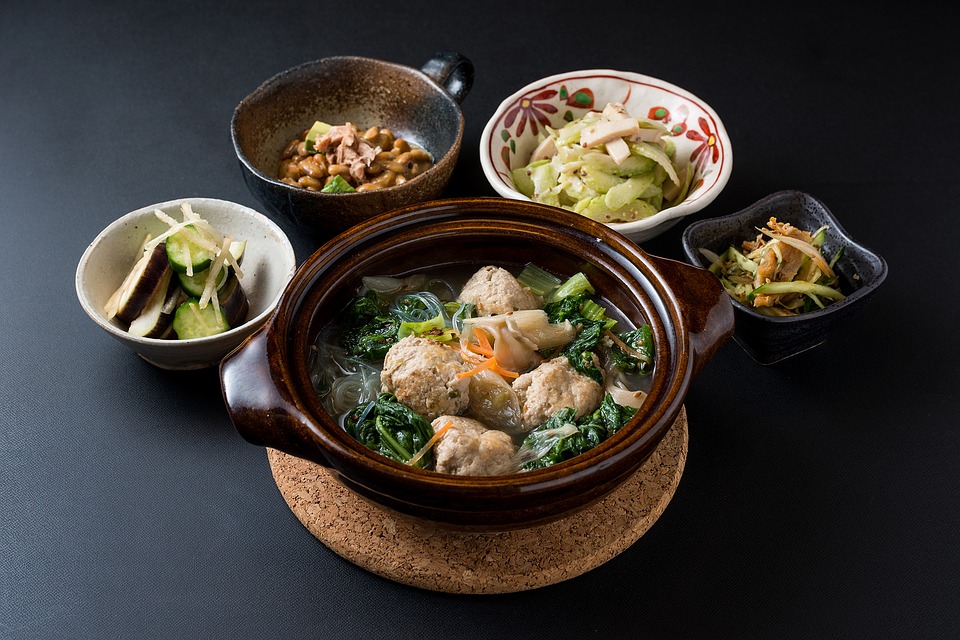Situated in the northern part of Tohoku region, Akita is Akita Prefecture’s capital city. It is home to numerous historical and cultural landmarks that date back to as far as 14,000 BCE, as well as several modern sites and attractions.
How To Get To Akita
There are three public transportation options available to get to Akita — plane, train, and overnight bus.
Akita Airport, which is classified as a second class regional airport, operates a number of domestic and international flights on a daily basis.
All Nippon Airways offer direct flights between Akita Airport and Tokyo’s Haneda Airport, Nagoya’s Centrair Airport, Sapporo’s New Chitose Airport, and Osaka’s Itami Airport. Japan Airlines, meanwhile, have flights to and from Tokyo’s Haneda Airport, Osaka’s Kansai Airport and Itami Airport, and Sapporo’s New Chitose Airport. Foreign airline companies, such as EVA Air and China Airlines, offer international charter flights to and from Taipei’s Taoyuan Airport, and Korean Air handles seasonal flights to and from Seoul’s Incheon Airport.
The one-way journey takes about an hour and 10 minutes, and costs between 14,000 yen and 28,000 yen.
By railway, Akita is connected to Tokyo via the JR Akita Shinkansen. The one-way trip costs around 18,000 yen, and is approximately four hours long. Trains depart about once per hour.
If coming from Osaka or Kyoto, get on the JR Tokaido Shinkansen for a two-and-a-half hour trip to Tokyo Station, where you need to transfer to the JR Akita Shinkansen line headed to Akita Station. The entire one-way ride is approximately seven hours long, and costs roughly 30,000 yen.
The cheapest option to get to Akita is by overnight bus from Tokyo. Bus companies, such as Odakyu Bus, Willer Express, and Akita Chuo Kotsu, provide bus services between the two cities. The one-way trip takes around eight hours, and costs about 10,000 yen.
Check out the Japan Bus Online website for routes, ticket prices, timetables, and reservation information.
Top Attractions in Akita
Jizoden Ruins
The Jizoden Ruins are believed to have existed during the Jomon and Yayoi Eras, two Japanese prehistoric periods that ran between 14,000 BCE and 300 AD. The excavated site revealed several well-preserved items and artefacts that include pots, jars, figurines, and tools.
Kanto Matsuri
An annual festival observed every August 3rd to 6th, the Kanto Matsuri is a vibrant spectacle highlighted by an evening parade that features long bamboo poles as long as 12 metres, adorned with as many as 46 brightly lit paper lanterns.
Around 250 performers try to balance these poles on their palms, foreheads, shoulders, and hips through the use of different strategies and techniques, during the festival’s main event known as the Night Parades. The showcase lasts for approximately an hour and a half.
During daytime, there are various smaller events held all over the city centre, such as the Kanto Competitions, where people can take part in solo or group performances accompanied by music.
The main festival events are held along Akita’s Chuo Dori Street, which is located approximately 15 minutes away from Akita Station on foot.
Akita Museum of Art
Designed by famous Japanese architect Ando Tadao, the Akita Museum of Art is a beautiful, triangle-shaped art museum where art enthusiasts can go to enjoy Western style art pieces created by Japanese painter Fujita Tsuguhari, a Japan-born, naturalized French artist who spent several years in France in his lifetime. It also houses exhibits from other local artists, most particularly the works of Akita native Hirano Masakichi.
To get to the museum, walk about ten minutes from Akita Station.
Akita Castle Ruins
Built in 780, Akita Castle used to be a fortress that ran major military operations during the Nara Period and Heian Period. Over the centuries, it encountered serious damages due to an earthquake in 830; and big wars, like the Ganki Disturbance and the Tenki Disturbance. Today, the site ruins are recognized as a National Historic Site.
From Akita Station, the Akita Castle Ruins is accessible by bus. Get off at the Gokoku Shrine stop, and walk about three minutes to the castle’s outer east gate.
Kubota Castle
Founded in 1604, Kuboto Castle is a Japanese fortification that occupies about 40 metres of land on a hill by the Nibetsu River. It is composed of several moats, watchtowers, stone walls, gates, and the Senshu Park, a large attractive park with more than a thousand sakura trees and a Shinto shrine.
Its grounds also have the Satake Historical Material Museum, a historical museum that contains exhibits about the Satake family; and the Kurosawa House, an Edo-era samurai building relocated there in 1988.
The site is about a 10-minute walk away from Akita Station.
Kawabata
Found along the Asahikawa riverbanks, Kawabata is Akita’s entertainment district. It is home to a wide selection of diners and restaurants that offer menus of different authentic local cuisines. Go there if you want to feast on mouthwatering inaniwaudon, a kind of handmade noodles; kiritanpo, a type of rice dish; iburi-gakko, a dish made up of pickled and smoked vegetables; and shottsurunabe, a hot pot dish made with fish.

From Akita Station, Kawabata is about 15 minutes away on foot.
Getting Around Akita
Because many of Akita’s top sightseeing spots are found in the heart of the city, exploring on foot is the most common method of getting around. But, for sites located farther, take advantage of the city’s reliable bus network.
More information can be found on Akita City Sightseeing’s official website.
Weather in Akita
Akita experiences extremely cold and snowy winters, with daily temperatures between 0 and 5 degrees Celsius. In the summer, the days are not that hot but tend to be very humid, with temperatures falling between 20 and 25 degrees, and see a lot of rainfall, most especially in July and August. Spring weather is perfect for some outdoor sakura viewing, with daily temperatures from 10 to 15 degrees, and autumn season offers cool and pleasant daily temperatures of 15 to 20 degrees.
